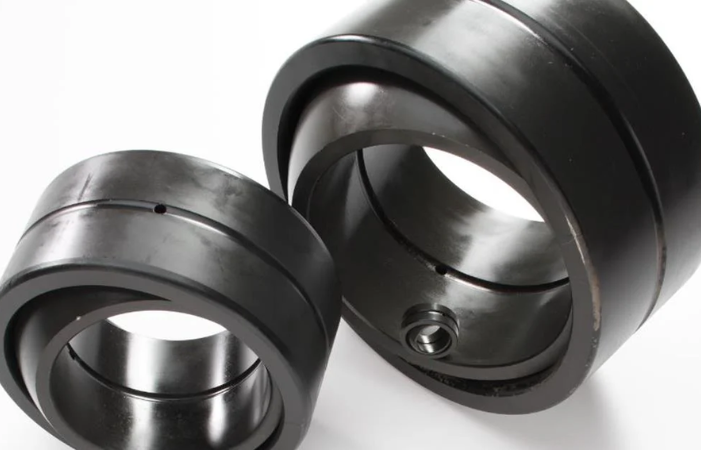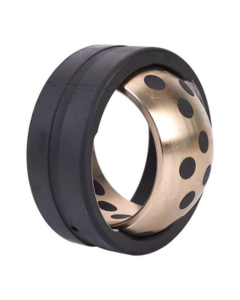When it comes to engineering and industrial machinery, components that ensure smooth, reliable movement under various loads are essential. One such crucial part is the spherical plain bearing. Though they may not always be in the spotlight, these bearings are indispensable in many applications, offering unique solutions for motion control, load management, and durability.
In this blog post, we’ll explore what spherical plain bearings are, how they work, and why they’re the preferred choice for specific applications. We’ll also discuss how choosing high-quality spherical plain bearings can significantly improve the performance and lifespan of your machinery.
What Is a Spherical Plain Bearing?
A spherical plain bearing (also known as a spherical bearing or self-aligning bearing) is a type of bearing that is designed to support rotary or oscillatory movements while accommodating angular misalignment between the shaft and housing. Unlike traditional bearings that rely on a fixed alignment, spherical plain bearings can operate even when there is some degree of misalignment between the two surfaces.
Spherical plain bearings consist of two main components:
- Outer Ring: The part of the bearing that provides the bearing surface for the inner part.
- Inner Ring: The component that has a spherical surface, allowing it to move freely and align with the outer ring’s curvature.
These bearings typically feature sliding surfaces made of steel, bronze, or PTFE (polytetrafluoroethylene), depending on the specific requirements of the application.
How Do Spherical Plain Bearings Work?
Spherical plain bearings are designed to handle complex motion. The unique feature of a spherical bearing is that it has a spherical raceway that allows for relative motion between the inner and outer rings in multiple directions.
This makes them ideal for situations where:
- The axis of rotation is subject to misalignment or angular displacement.
- The bearing needs to support high radial and axial loads.
- There is a requirement for smooth, oscillating motion or low-speed motion over extended periods.
For example, when a shaft moves within the bearing, the inner ring pivots inside the spherical outer ring, allowing the shaft to shift in multiple directions without causing wear or excessive friction. In this way, spherical plain bearings help ensure continuous operation in systems that experience dynamic motion and alignment changes.
Types of Spherical Plain Bearings
Spherical plain bearings come in several variations, depending on the application requirements:
1. Metal-Polymer Bearings
These bearings feature an inner metal ring and an outer ring made of a special polymer material, such as PTFE. The polymer provides low friction, excellent wear resistance, and reduces the need for lubrication, making them ideal for situations where lubrication might be challenging to maintain.
2. Steel-Steel Bearings
These spherical bearings are made entirely from steel, offering high load-bearing capacity and durability. They are best suited for heavy-duty applications where high radial and axial loads are expected, such as in industrial machinery, automotive systems, and construction equipment.
3. Self-Lubricating Bearings
A type of spherical plain bearing that uses materials such as PTFE or graphite to provide self-lubrication, ensuring smooth operation without the need for external lubrication. These are particularly useful in environments where adding grease or oil is impractical or undesirable.
Why Choose Spherical Plain Bearings?
Spherical plain bearings are favored in industries and applications where traditional bearings would fail due to misalignment, oscillation, or complex movement. Below are some of the key benefits of using spherical plain bearings:
1. Ability to Accommodate Misalignment
One of the primary advantages of spherical plain bearings is their ability to handle angular misalignment between the shaft and housing. This flexibility is especially beneficial in heavy machinery, construction equipment, and other applications where misalignment is inevitable due to mechanical stress or deformation over time.
2. High Load Capacity
Spherical plain bearings are designed to carry high radial and axial loads, making them ideal for use in demanding applications where large forces are at play. Their robust design allows them to manage heavy-duty tasks without compromising on performance.
3. Low Maintenance Requirements
Certain types of spherical plain bearings, particularly self-lubricating and metal-polymer versions, require minimal maintenance. Their built-in lubrication reduces the need for external maintenance, ensuring longer service intervals and lower operational costs.
4. Durability in Harsh Environments
Spherical plain bearings are built to withstand harsh conditions such as high temperatures, shock loads, or exposure to corrosive substances. This makes them suitable for use in industries like construction, mining, agriculture, and aerospace, where equipment is often subject to extreme environments.
5. Smooth, Controlled Motion
Spherical plain bearings provide smooth, controlled movement in oscillating or rotating parts. Their ability to reduce friction and wear ensures long-lasting performance, even under continuous or heavy loads.
Common Applications of Spherical Plain Bearings
Spherical plain bearings are widely used across a range of industries due to their versatility and performance in challenging environments. Some common applications include:
- Construction Machinery: Excavators, cranes, and bulldozers, where heavy loads and misalignment are common.
- Automotive and Heavy Vehicles: Steering systems, suspension components, and gearboxes.
- Aerospace: Aircraft landing gear, control surfaces, and engine components.
- Agricultural Equipment: Tractors, combine harvesters, and other heavy-duty farming machinery.
- Industrial Machinery: Compressors, pumps, and heavy-duty manufacturing equipment.
- Renewable Energy: Wind turbines, where movement and alignment are subjected to dynamic forces and misalignment.
Why Choose High-Quality Spherical Plain Bearings?
Choosing the right spherical plain bearing is critical to ensuring the long-term performance and reliability of your equipment. Here are a few reasons why opting for high-quality bearings is essential:
- Reduced Downtime: Premium spherical plain bearings are engineered for durability, which means fewer breakdowns and reduced maintenance costs. This translates into less downtime and better operational efficiency.
- Enhanced Efficiency: High-quality bearings reduce friction and wear, helping machinery to run smoother, faster, and more efficiently.
- Longer Lifespan: Superior materials and manufacturing processes ensure that high-quality spherical plain bearings can withstand heavy loads and adverse conditions for longer periods, resulting in a lower total cost of ownership.
- Customization Options: For specialized applications, many manufacturers offer custom spherical plain bearings that are designed to meet specific needs, ensuring optimal performance in unique environments.
Conclusion
Spherical plain bearings may be small in size, but their role in supporting motion and reducing friction in complex, high-load environments is invaluable. With their unique ability to accommodate misalignment, handle heavy loads, and perform reliably in harsh conditions, spherical plain bearings are essential components in machinery across a wide range of industries.
If you’re looking for spherical plain bearings that offer unmatched performance and durability, be sure to invest in high-quality products tailored to your specific application. With the right bearing, your machinery can operate smoothly and efficiently, reducing downtime, cutting maintenance costs, and ensuring long-term reliability.



Leave A Comment